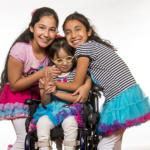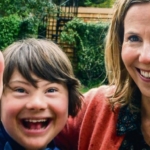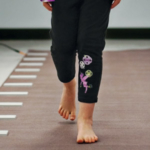Early focus on gross motor skills may benefit children with autism
Study finds link to social milestones.
In children with autism spectrum disorder (ASD), lower fine and gross motor skills are associated with higher disease severity scores, according to new research that supports the concept of earlier motor skills intervention in this population.

Photo credit victoriadailyphoto.blogspot.com
By Shalmali Pal, Lower Extremity Review August 2014
Kids, aged 12 to 33 months, whose mean scores for gross motor skills were almost six and a half months behind typical milestones for their chronological age, also had similar deficits related to social-communicative skills, reported Megan MacDonald, PhD, an assistant professor of Movement Studies in Disability at Oregon State University in Corvallis.
Improving an autistic child’s motor skills early in life may provide a better foundation for improving other areas, such as social communicative skills, language, and adaptive behavior, MacDonald and colleagues wrote in the April issue of Adapted Physical Activity Quarterly.
Early therapy for communication and behaviorial issues has proven worthwhile, MacDonald said, but with this study, her group sought to answer the question: How can we make early intervention better?
“Motor skills is a content area where I think there is room for improvement,” she said.
The group evaluated 159 children (mean age, 27.6 months), the majority of whom (110) had a confirmed diagnosis of ASD.
The Mullen Scales of Early Learning, which include a subscale focused on gross motor skills, was used to assess cognitive development. Autism severity was measured with the Autism Diagnostic Observation Schedule, a semi-structured assessment of communication, social interaction, and play.
The results indicated that gross motor skills were significantly related to calibrated autism severity. They also found that having a confirmed ASD diagnosis, age, and nonverbal problem solving were significant predictors of calibrated autism severity.
“Fine motor skills were 9.5 months behind chronological age and gross motor skills deficits were 6.4 months behind chronological age,” they wrote, adding that the relationship of motor skills and calibrated autism severity held constant across variables such as nonverbal problem solving, age, and gender. “In other words, this relationship is not driven entirely by intellectual ability.”
From a clinical perspective, the findings suggest that a lack of motor skills may hinder an autistic child’s success in achieving social-communicative milestones, MacDonald explained.
“In our interventions for teaching communicative skills, we use an approach called active play,” she said. “If we can improve motor skills first, how does that help active play? If we improve the motor skills set, will that give the child more opportunities to participate in active play and social interactions?”
While the standard of care in pediatric ASD generally calls for addressing social-communicative issues first, would it make sense to first focus intervention on building and improving gross motor skills? MacDonald said it was too soon for a definitive answer to that question.
“It is another potential avenue to consider for interventions. If our goal is to reach developmental milestones, then it may be worthwhile to address those motor skill milestones early on. I think [early intervention] is a chance for healthcare providers to work together,” she said.
Jason Henry, MSPT, LO, of Hope Orthotics in Spring, TX, pointed out a child with ASD who has delayed gross motor skills– especially due to hypotonia–would benefit overall from the use of corrective orthoses that provide proprioceptive feedback and help to control excessive malalignment issues dynamically.
“A child with hypotonia should be able to pronate and supinate within reason, so that appropriate motor learning can take place,” Henry added.
Clare MacFarlane, PhD, of Therapies for Kids in Sydney, Australia, concurred that improving gross motor skills can serve as the foundation for other therapies, based on the developmental pyramid theory.
MacFarlane explained that in this pyramid, the base level of development starts with basic sensations (taste, touch, etc). Higher levels of the pyramid include gross and fine motor skills, communication, and advanced cognitive function.
“If there are pieces of the pyramid missing…the higher levels of pyramid may not have the best opportunity to develop,” she said. “I think [giving a child] independence with sitting, movement, crawling, walking, and investigating their environment will assist with the more advanced skills, such as communication and comprehension.”
MacDonald said her group is working on a pilot project to test an intervention protocol that focuses on motor skills. She also said they’d like to do a longitudinal analysis of how weak motor skills at a young age manifest in children with autism when they are older.
| Shalmali Pal is a freelance writer based in Tucson, AZ. |
 Source Lower Extremity Review
Source Lower Extremity Review
| References |
Motor skills and calibrated autism severity in young children with autism spectrum disorder, MacDonald M, Lord C, Ulrich DA. Adapt Phys Activ Q. 2014 Apr;31(2):95-105. doi: 10.1123/apaq.2013-0068.
Also see
Motor skill deficiencies linked to autism severity, research says Science Daily
Autism diagnosis taking too long, experts say Science Daily






